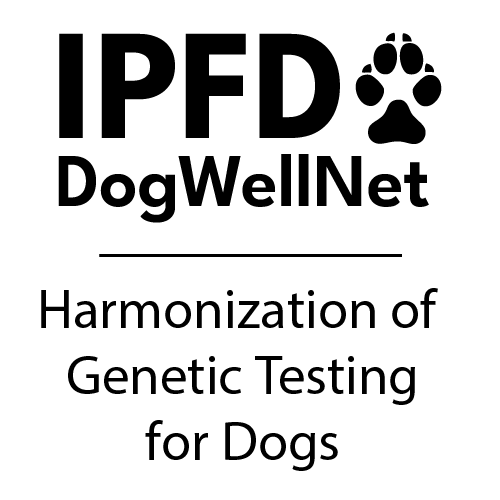How to Use The HGTD:
Welcome to the Harmonization of Genetic Testing for Dogs resource. This resource is designed to improve standardization of, and access to, robust genetic testing to support health improvements and a sustainable future for healthy dogs.
Here, you’ll find a wealth of information on Genetic Testing Providers (labs); genetic tests, and tests by breed.
There are two major components of the HGTD: the Quality Testing Database and Genetic Counselling resources (still in development).
To Get Started:
First, have a look around the site. You’ll find the HGTD database and search options, as well as resources that help to explain some of the terms used on the database, and guides for understanding accreditation and quality standards.
If you are new to genetic testing, you may want to start by taking some time to read about accreditation before using the database, and our resources on breed-specific health recommendations, and genetic testing more generally.
Searching by Breed:

You can search by typing part of the name of the breed you are interested in. For example, if you type in “Lab", you’ll start to see all the breeds with “Lab" in the name.
Once you select the breed you want, and hit “search”, a new page will open where you’ll see a list of the genetic tests or “phenes” that are available for that breed, from all of the genetic test providers on the database.

What do the paw prints that follow the name of the genetic test mean?
Read about Relevance Ratings...
♦ 2020-New What is a Relevance Rating?
On this page click on any of the genetic tests listed for the breed for more information on that test.
A new page will open where you will find the generic phene information. (ex. PRA-pcrd).
This page will include:
-
other breeds that have that test available,
-
the genetic test providers who offer the test,
-
general information about the test itself – such as a description of the phene, if it is considered a disease or not,
-
inheritance information,
-
original research, and much more.
Tip: If you want to know more about the bold terms in the left column, you can hover with your mouse for a short description!
What if I’m after breed-specific information?
The General test information includes information on research publications, and breeds that have been included in published research. You will also find a Breed Specific Info section with more detailed information for some breeds. You can also see GTP Breed Specific Data, where GTPs provide test and breed-specific information – such as when more than one test is advised, or how to best use test results.
Tip: The HGTD Database Resource includes a Glossary of terms, and Genetics Terms, including information on inheritance.
Searching by Test/Disease:
This is particularly useful for researchers, health professionals, and owners wanting to know more about a specific phene. (A phene can be any genetic trait – disease or not). You may be aware that there often isn’t a standard name for many phenes. We have designed our search engine to try to harmonize the many variations to the most common names and synonyms. For most phenes, you can search by both the long-written name, such as Progressive Retinal Atrophy or common abbreviations, such as PRA. Like our Breed search function, you should see a list of options when you start typing a name or term. Select your desired phene and hit “search.”
Tip: If you are looking for phenes for a specific breed, it will be faster to Search by Breed.
Once you click on the genetic test of your choice, you will see the generic phene information available. This will include breeds that have that test available, the genetic test providers who offer the test, and general information about the test itself. Naming information available includes our standardized name, alternatives names and synonyms. Information on the mutations include the gene(s), OMIA number and links (Online Mendelian Inheritance in Animals) any identified mutations and original research, including the first known publication identifying the phene mutation/test discovery. You’ll also see a list of any breeds that are known to have been included in research publications. For breeding or health information, there are both simplified and detailed disease/phene descriptions including inheritance, and, where possible, breed-specific information. You can also see information on patents and licenses known to be held, by country.
Tip: You can click on any breed name to go to that breed’s information.
Search by Labs/Test Providers
You can view all of the current genetic test providers (GTPs) listed in alphabetical order. You can quickly see the country and location of each GTP, plus Badges indicating popular quality indicators. Descriptions of quality indicators are found in the Terms/Glossary.
You can click on any GTP, and go to the lab's page where you will find a wealth of information, divided into five sections:
-
General Information,
-
People,
-
Quality Indicators/GTP,
-
Quality Indicators/Procedures and Services, and
-
Research.
General information includes basics about each GTP, such as contact information and physical addresses. People information includes details of the staff and expertise available. Quality indicators for the GTP include a variety of accreditation (both formal and informal, national and international) held by a GTP, as well as information on services and outsourcing.
Tip: You can read more about accreditation in About Accreditation.
Quality indicators for procedures/services provides information about how samples are handled, results are reported, and how problems are avoided and resolved. The research section indicated if a GTP is either a research laboratory or participates in research, including patent and licensing information, and original research publications.
You can also see a full list of phenes/tests available from the GTP, which are linked to further detailed phene information.






Recommended Comments
There are no comments to display.
Please sign in to comment
You will be able to leave a comment after signing in
Sign In Now